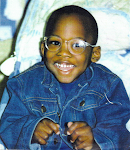The final version of Leading Change: A Plan for SAMHSA’s Roles and Actions 2011 – 2014 was released today. On October 8, 2010, what would have been Sekai's 17th birthday, I attended the SAMHSA Open House, and commented on the Strategic Initiatives draft document.
Upon receiving notification that the new document had been posted, I felt excited, pleased, and hopeful, as I remembered speaking about Sekai at the Open House. I felt quite sad, thinking that this came too late for him, that I miss him terribly, that it is such a shame that he is not here to benefit from the changes that are taking place and will take place. I also felt curious, though, and so I did a simple word search based on the points that I made during my comments. (I need to go through my files--ok, piles--and find my notes from that day. I may share them in a later post, or maybe amend this post.) Suffice to say that my comments were based on a Sekai perspective, and included issues such as the importance of using person first language in the document, and the need to include in the initiatives persons who have mental health disorders in addition to other disabilities and persons who have had involvement in the foster care system.
Many others commented on the draft document during the Open House, and there were multiple other opportunities to provide feedback, such as by calling in, emailing, and using an online forum, and in posting the document on Facebook, SAMHSA commented, "Thanks for all those that provided feedback during the commenting period. Your input was essential to the new iteration of the Strategic Initiatives paper." So while I am not at all trying to take credit for the changes that were made, I am grateful to have been one of the ones who spoke up, grateful that we were heard, and grateful to have been able to speak up in the name of my beloved Sekai.
Back to that word search. Here are the terms that I searched, and the number of times that they appear in the draft and final documents:
“foster care”
Draft-3
Final-4
“disabled”
Draft-2
Final-0
“other disabilities”
Draft-0
Final-1
“with disabilities”
Draft-5
Final-11
The increase in the use of the term "with disabilities" is really significant to me, not just because the increase was so great, but because of how and where the term is used...especially here:
Goal 1.3: Prevent suicides and attempted suicides among populations at high risk, especially military families, LGBTQ youth, and American Indians and Alaska Natives.
Objective 1.3.1: Improve mental, emotional, and behavioral health and well-being among military families, youth, American Indians and Alaska Natives, ethnic minorities including Latina girls, LGBTQ youth, people aged 45 to 65, and people with disabilities.
Wednesday, March 30, 2011
Subscribe to:
Post Comments (Atom)





No comments:
Post a Comment